No es de extrañar que Barcelona vuelva a ser una de las 10 ciudades con más apariciones en Instagram en 2017. Con algunas de las calles más icónicas, bellas y sorprendentes de Europa, Barcelona es una maravilla arquitectónica. Lo viejo se mezcla con lo nuevo o yuxtapone de manera dramática a la vuelta de la esquina. Dé un paseo por las calles de Barcelona y descubra audaces mansiones góticas y obras maestras modernistas distintivas y únicas, todas a una manzana. Ya sea que estés planeando un homenaje a la arquitectura o simplemente quieras unirte a las multitudes y obtener tus propias fotos dignas, esta es nuestra guía de arquitectura ineludible para Barcelona. La guía está diseñada para resaltar algunas de las joyas de la arquitectura de Barcelona que van más allá de los favoritos de Gaudí.
Arquitectura Moderna
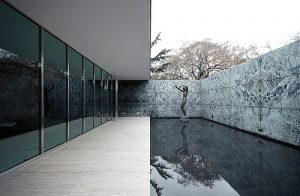
El Pabellón – Originalmente diseñado como el pabellón nacional alemán para la Exposición Internacional de Barcelona de 1929, por Ludwig Mies van der Rohe (1886-1969), y construido con vidrio y acero, además de diferentes tipos de mármol. Tras el cierre de la exposición, el pabellón fue desmontado en 1930. Sin embargo, debido a la importancia y la reputación del pabellón, en 1980 los pensamientos de una reconstrucción pronto se pusieron en acción con los arquitectos Ignasi de Solà-Morales, Cristian Cirici y Fernando Ramos investigando, diseñando y supervisando el proyecto. Los arquitectos se ciñeron estrechamente al diseño original de Mies en 1929, utilizando un llamativo equilibrio de vidrio y acero junto con travertino romano, mármol alpino verde, mármol verde antiguo de Grecia y ónice dorado de las montañas del Atlas; materiales que expresan modernidad a través del rigor de su geometría.
De un vistazo – una obra maestra de cristal, acero y mármol de 1929 que desapareció en los años 30 y luego volvió a la vida en las últimas décadas.
La Fundación – Construida expresamente para albergar la obra de Joan Miró, La Fundación es una creación contemporánea de Josep Lluís Sert; arquitecto, urbanista y gran amigo del propio Joan Miró. El edificio de la Fundación Joan Miró es posiblemente uno de los ejemplos más destacados de arquitectura racionalista en Barcelona, ??con características mediterráneas de un patio central, una terraza y tragaluces. Este impresionante ejemplo de arquitectura es claramente el trabajo de dos creadores irrepetibles y uno de los iconos culturales de la ciudad, en el que el arte, la arquitectura y el paisaje se unen.De un vistazo – ¿El mejor tributo a Joan Miró? Visita, explora y decide por ti mismo en esta belleza única en Montjuïc
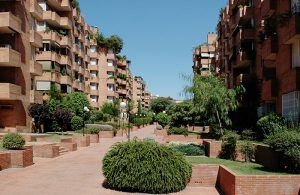 Cocheras De Sarria – Estos inmensos superbloques de 200m x 200m son obra de José Antonio Coderch de Sentmenat, quien tenía cierta afinidad con las casas georgianas inglesas, y tenían la firme convicción de que las plantas y el verde en el hogar eran muy importantes, así que todas las aberturas para plantar flores y vides, y cada superbloque debía tener una o dos plazas y calles peatonales. Las aceras fueron diseñadas para ubicarse en el centro de las calles, y las áreas de jardín, que forman plataformas que aíslan las plantas bajas, de diferentes alturas, con la intención de que esto permita «una vida placentera» para los residentes.
Cocheras De Sarria – Estos inmensos superbloques de 200m x 200m son obra de José Antonio Coderch de Sentmenat, quien tenía cierta afinidad con las casas georgianas inglesas, y tenían la firme convicción de que las plantas y el verde en el hogar eran muy importantes, así que todas las aberturas para plantar flores y vides, y cada superbloque debía tener una o dos plazas y calles peatonales. Las aceras fueron diseñadas para ubicarse en el centro de las calles, y las áreas de jardín, que forman plataformas que aíslan las plantas bajas, de diferentes alturas, con la intención de que esto permita «una vida placentera» para los residentes.
De un Vistazo – pareciendo la mente maestra de un genio de Lego, estos no son tus bloques de pisos ordinarios.
Arquitectura modernista
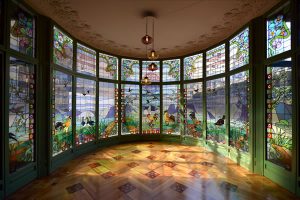 Casa Lleó i Morera – En 1902, Francesca Morera i Ortiz encargó al arquitecto Lluís Domènech i Montaner el trabajo en la casa Lleó i Morera. La casa fue diseñada como una remodelación completa de la casa existente, Casa Rocamora, construida por el maestro de obras Joaquim Sitjas en 1864. Más tarde el hijo de Francesca Morera i Ortiz, Albert Lleó i Morera se hizo cargo de la casa, dándole el nombre por el cual es conocido hoy, Casa Lleó i Morera. La obra de arte verdaderamente modernista que vemos hoy en parte se debe a la reconstrucción de la fachada, además de tres galerías y balcones de piedra en diferentes pisos, y el rediseño del interior, que más tarde se encargó, utilizando un gran grupo de maestros artistas y artesanos, como el escultor Eusebi Arnau, el mosaicista Mario Maragliano y el ebanista Gaspar Homar, entre otros, para llevar a cabo el trabajo.
Casa Lleó i Morera – En 1902, Francesca Morera i Ortiz encargó al arquitecto Lluís Domènech i Montaner el trabajo en la casa Lleó i Morera. La casa fue diseñada como una remodelación completa de la casa existente, Casa Rocamora, construida por el maestro de obras Joaquim Sitjas en 1864. Más tarde el hijo de Francesca Morera i Ortiz, Albert Lleó i Morera se hizo cargo de la casa, dándole el nombre por el cual es conocido hoy, Casa Lleó i Morera. La obra de arte verdaderamente modernista que vemos hoy en parte se debe a la reconstrucción de la fachada, además de tres galerías y balcones de piedra en diferentes pisos, y el rediseño del interior, que más tarde se encargó, utilizando un gran grupo de maestros artistas y artesanos, como el escultor Eusebi Arnau, el mosaicista Mario Maragliano y el ebanista Gaspar Homar, entre otros, para llevar a cabo el trabajo.
De un vistazo – un supergrupo de talento artístico compartido en el producto final. Una explosión de modernismo y uno de los mejor conservados de su tipo en la ciudad.
 Casa de les Punxes – Justo en el corazón de la Plaza de Oro de Barcelona, ??descubre una casa llena de historia. Casa Terradas, más popularmente conocida como Casa de les Punxes, es un palacio urbano modernista, de inspiración medieval, algo único, que a pesar de su ubicación céntrica, rara vez ha sido descubierto. El arquitecto de Casa de les Punxes fue Josep Puig i Cadafalch, una importante figura del modernismo en catalán, cuyo trabajo se muestra bien en Casa de les Punxes, con su enigmático tejado rodeado de torres casi caprichosas.
Casa de les Punxes – Justo en el corazón de la Plaza de Oro de Barcelona, ??descubre una casa llena de historia. Casa Terradas, más popularmente conocida como Casa de les Punxes, es un palacio urbano modernista, de inspiración medieval, algo único, que a pesar de su ubicación céntrica, rara vez ha sido descubierto. El arquitecto de Casa de les Punxes fue Josep Puig i Cadafalch, una importante figura del modernismo en catalán, cuyo trabajo se muestra bien en Casa de les Punxes, con su enigmático tejado rodeado de torres casi caprichosas.
De un vistazo – incluso los visitantes que se repiten en Barcelona se han perdido este castillo que evoca un poco de Disney y una visión única del modernismo.
Antiga Fabrica Casarramona – Un antiguo edificio modernista construido entre 1909 y 1912, y actual sede del CaixaForum Barcelona desde 2002. Originalmente la fábrica era propiedad de Casimir Casaramona i Puigcercós, un fabricante de algodón industrial, que necesitaba un nuevo edificio para reemplazar el anterior que se quemó , por lo que encargó el proyecto a Josep Puig i Cadafalch. Más tarde, cuando la Fundación «La Caixa» adquirió el edificio, lo restauró y lo adaptó para ser un centro cultural y social, ahora conocido como CaixaForum Barcelona. Las diversas soluciones estructurales y ornamentales del edificio Casarramona se basan en una perfecta comprensión de la tecnología de ladrillos, bajo una tendencia óptica hacia el funcionalismo, incorporando arcos de descarga y un sistema de soportes metálicos para contrarrestar los empujes laterales, mientras que dos torres ocultan tanques viejos, marca el eje de simetría del todo.
De un vistazo – uno para los apreciadores de los arquitectos. Parte maravilla de la ingeniería, parte bonita como una imagen.
Arquitectura contemporanea
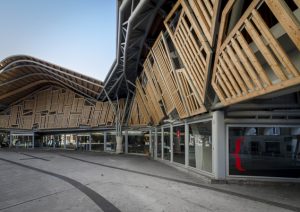 Mercado de Santa Caterina – Tras la demolición del convento de Santa Caterina, el terreno fue otorgado al ayuntamiento, que designó al arquitecto Josep Mas Vila para construir un mercado. Los planes de Josep fueron como poco ambiciosos, y superaron con creces las funciones de los mercados existentes en la Plaza del Born y Sant Josep. A pesar de varios inconvenientes en el camino, en 1846 el mercado comenzó a trabajar tímida y provisionalmente, con un mercado de pescado y otras pocas paradas, hasta que se inauguró oficialmente en 1848 como el primer mercado cubierto en la ciudad. En 1997 comenzó una remodelación, con los diseñadores arquitectónicos Enric Miralles y Benedetta Tagliabue, trabajando junto con el artista Toni Comella, que trabajó en los espectaculares mosaicos de colores para el proyecto. Al finalizar la remodelación en 2005, el Mercado de Santa Caterina era una mezcla de nueva arquitectura con la anterior, conservando características tan originales como las antiguas puertas de entrada, y entregando un híbrido contemporáneo que enfatiza la utilidad.
Mercado de Santa Caterina – Tras la demolición del convento de Santa Caterina, el terreno fue otorgado al ayuntamiento, que designó al arquitecto Josep Mas Vila para construir un mercado. Los planes de Josep fueron como poco ambiciosos, y superaron con creces las funciones de los mercados existentes en la Plaza del Born y Sant Josep. A pesar de varios inconvenientes en el camino, en 1846 el mercado comenzó a trabajar tímida y provisionalmente, con un mercado de pescado y otras pocas paradas, hasta que se inauguró oficialmente en 1848 como el primer mercado cubierto en la ciudad. En 1997 comenzó una remodelación, con los diseñadores arquitectónicos Enric Miralles y Benedetta Tagliabue, trabajando junto con el artista Toni Comella, que trabajó en los espectaculares mosaicos de colores para el proyecto. Al finalizar la remodelación en 2005, el Mercado de Santa Caterina era una mezcla de nueva arquitectura con la anterior, conservando características tan originales como las antiguas puertas de entrada, y entregando un híbrido contemporáneo que enfatiza la utilidad.
De un vistazo – líneas arrolladoras y diseños coloridos, el mercado de Santa Caterina satisface el apetito y el ojo.
MACBA – El edificio del Museu d’Art Contemporani de Barcelona fue diseñado en 1990 y construido entre 1991 y 1995 por el artista norteamericano Richard Meier. La arquitectura de Meier es fundamentalmente una reinterpretación formal del racionalismo, con referencias a los maestros del movimiento moderno. Él concibió el edificio como un conjunto de varios prismas, formados por una combinación de elementos geométricos rectilíneos y curvos, que son naturalmente suavizados por la luz externa que entra al edificio a través de las aberturas en las galerías abiertas y grandes claraboyas, así como en el atrio , un espacio por excelencia para la interacción.
De un vistazo – un diseño apropiado para las artes que contiene.
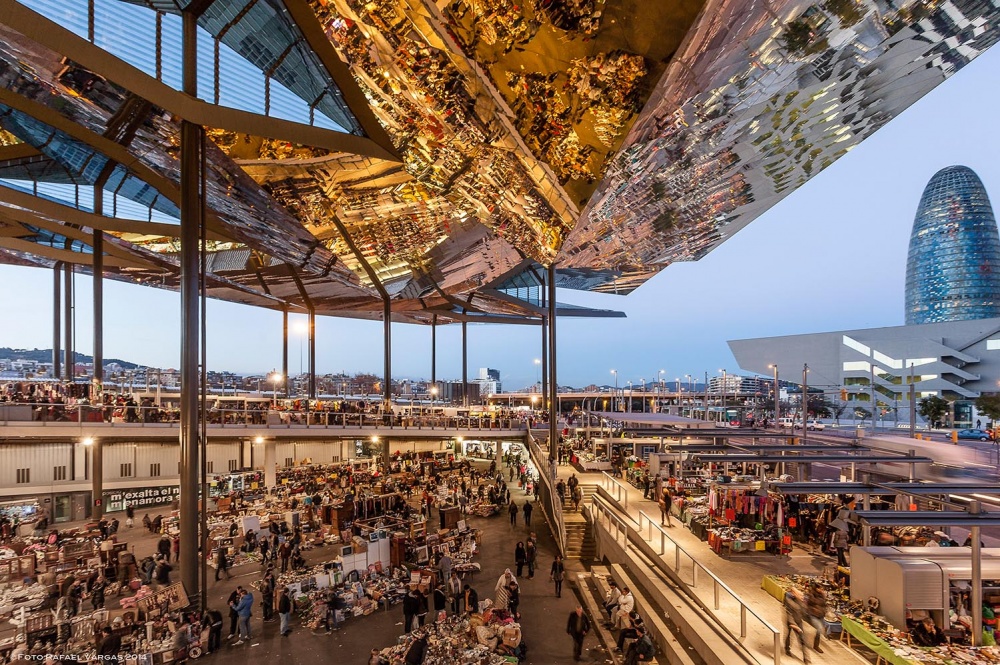 Mercat dels Encants – Este espacio comercial moderno presenta planos inclinados que se entrelazan en un bucle que genera un camino continuo entre las paradas comerciales y las pequeñas tiendas para proporcionar una experiencia «exterior» similar a la de caminar a lo largo de una calle peatonal. Una gran bóveda suspendida, de unos 25 metros de altura, ofrece reconocibilidad en el mercado como equipamiento urbano de primera clase y protege a los comerciantes y usuarios de la radiación solar, mientras que los múltiples planos rotos proporcionan hábilmente un reflejo de la ciudad hacia el interior del mercado
Mercat dels Encants – Este espacio comercial moderno presenta planos inclinados que se entrelazan en un bucle que genera un camino continuo entre las paradas comerciales y las pequeñas tiendas para proporcionar una experiencia «exterior» similar a la de caminar a lo largo de una calle peatonal. Una gran bóveda suspendida, de unos 25 metros de altura, ofrece reconocibilidad en el mercado como equipamiento urbano de primera clase y protege a los comerciantes y usuarios de la radiación solar, mientras que los múltiples planos rotos proporcionan hábilmente un reflejo de la ciudad hacia el interior del mercado
De un vistazo – los puestos de antigüedades y libros de segunda mano son típicos del mercado, el dosel reflexivo definitivamente no lo es.

